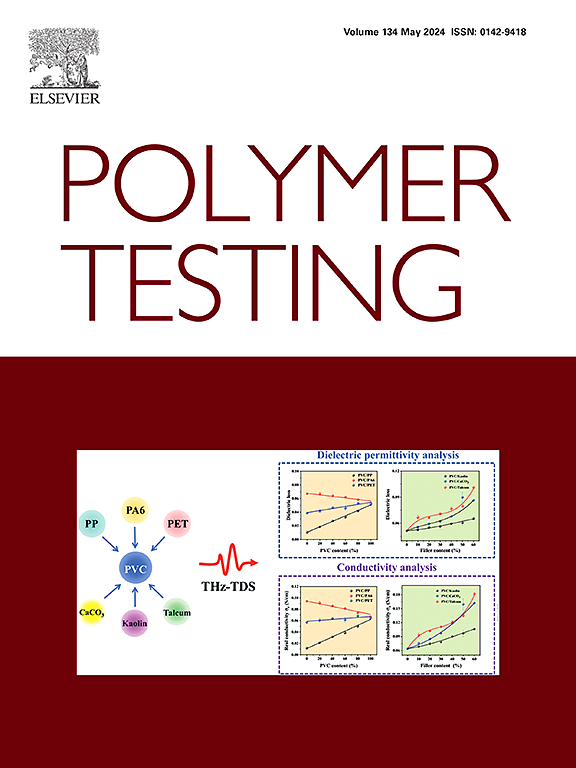Mechanical behavior of waste rock-based geopolymer as a sustainable backfill material: Strength evolution and fracture mechanisms
IF 5
2区 材料科学
Q1 MATERIALS SCIENCE, CHARACTERIZATION & TESTING
引用次数: 0
Abstract
Green backfill materials enhance slope stability and support sustainable mining in open-pit mines. However, current research mainly focuses on traditional loose fills, neglecting eco-friendly cementitious alternatives. In this study, the potential of waste rock-based geopolymers as mine backfilling materials were proved. Specifically, the compressive strength test was conducted to evaluate the effect of materials interaction, aggregate gradation index, alkali activator dosage, water-to-binder ratio and waste rock utilization rate on the strength. And acoustic emission (AE) technology was used to clarify fracture mechanisms of materials. Results demonstrated high-temperature treatment improves the compressive and flexural strength of waste rock-based paste, with calcined waste rock powder effectively enhancing fly ash reactivity. Increasing slag replacement reduces compressive strength linearly, with 5 MPa decline per 10 % increase in slag content. In addition, specimens with on-site gradation aggregate or higher alkali activator dosage exhibit superior strength. The water-binder ratio around 0.4 and 1:5 waste rock utilization ratio enhances reaction dynamic, maximizing compressive strength. Furthermore, the stress-strain process includes four distinct stages: the compaction and elastic stage, stable crack growth stage, unstable crack growth stage and the post-peak stage. Failure patterns predominantly feature single-slope shear fractures, with cracks concentrated in middle and upper areas of specimen. This study contributes to sustainable resource utilization and green mine construction.
废石基地聚合物作为可持续充填材料的力学行为:强度演化与断裂机制
绿色回填材料提高了露天矿边坡的稳定性,支持了露天矿的可持续开采。然而,目前的研究主要集中在传统的松散填料上,而忽视了生态友好的胶结材料替代品。本研究证明了废岩基地聚合物作为矿山回填材料的潜力。通过抗压强度试验,评价了物料相互作用、骨料级配指数、碱活化剂用量、水胶比、废石利用率等因素对强度的影响。利用声发射(AE)技术对材料的断裂机理进行了研究。结果表明,高温处理可提高废石基膏体的抗压和抗折强度,煅烧后的废石粉可有效提高粉煤灰的反应性。增加换渣量可线性降低抗压强度,每增加10%渣量可降低5mpa。此外,现场级配骨料或高碱活化剂用量的试样表现出较好的强度。水胶比在0.4左右,废石利用率为1:5时,反应动力增强,抗压强度最大化。应力-应变过程包括压实弹性阶段、稳定裂纹扩展阶段、不稳定裂纹扩展阶段和峰后阶段四个阶段。破坏形态以单坡剪切破坏为主,裂缝集中在试件中部和上部。该研究有助于资源的可持续利用和矿山的绿色建设。
本文章由计算机程序翻译,如有差异,请以英文原文为准。
求助全文
约1分钟内获得全文
求助全文
来源期刊

Polymer Testing
工程技术-材料科学:表征与测试
CiteScore
10.70
自引率
5.90%
发文量
328
审稿时长
44 days
期刊介绍:
Polymer Testing focuses on the testing, analysis and characterization of polymer materials, including both synthetic and natural or biobased polymers. Novel testing methods and the testing of novel polymeric materials in bulk, solution and dispersion is covered. In addition, we welcome the submission of the testing of polymeric materials for a wide range of applications and industrial products as well as nanoscale characterization.
The scope includes but is not limited to the following main topics:
Novel testing methods and Chemical analysis
• mechanical, thermal, electrical, chemical, imaging, spectroscopy, scattering and rheology
Physical properties and behaviour of novel polymer systems
• nanoscale properties, morphology, transport properties
Degradation and recycling of polymeric materials when combined with novel testing or characterization methods
• degradation, biodegradation, ageing and fire retardancy
Modelling and Simulation work will be only considered when it is linked to new or previously published experimental results.
 求助内容:
求助内容: 应助结果提醒方式:
应助结果提醒方式:


